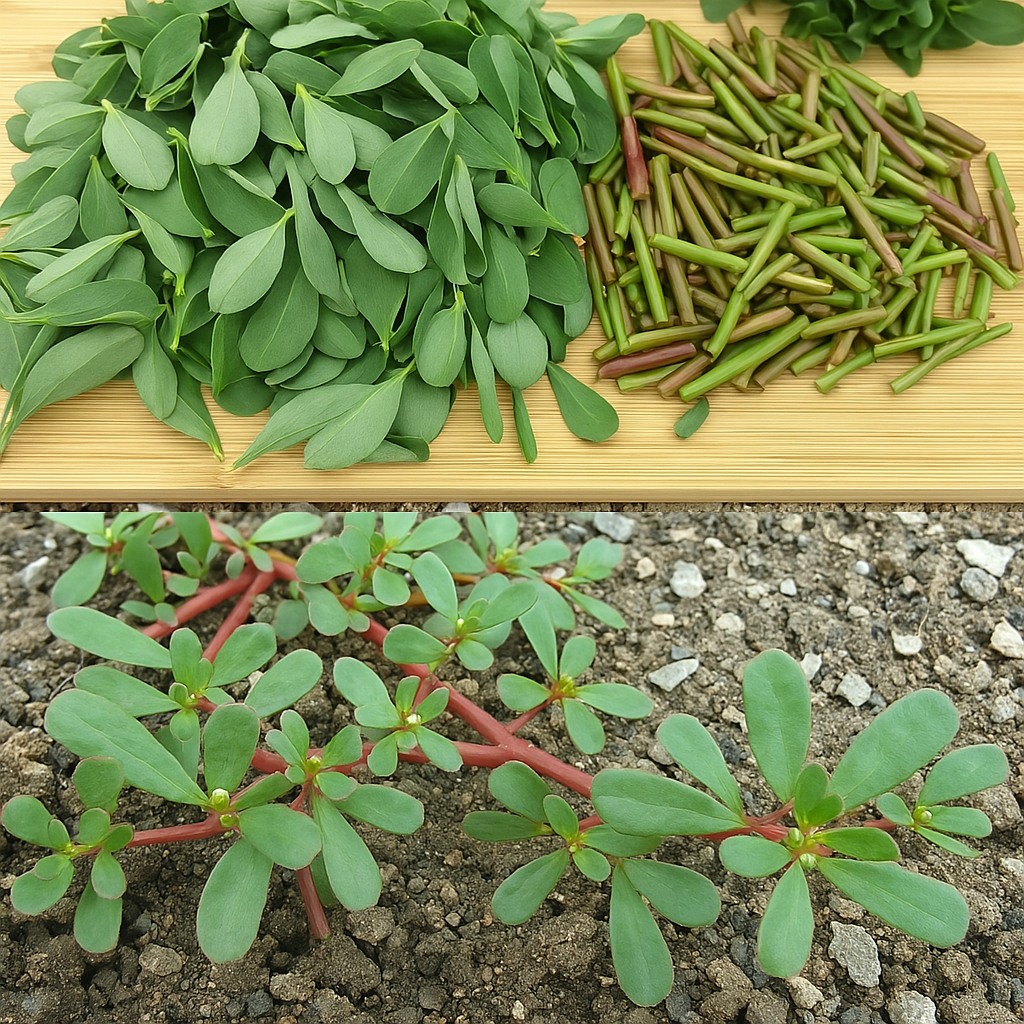ADVERTISEMENT
### 5. **Rich in Antioxidants**:
Purslane is loaded with antioxidants, including **vitamins A and C**. These antioxidants help fight off free radicals in the body, which can cause oxidative stress and contribute to chronic diseases like heart disease, cancer, and premature aging. By including purslane in your diet, you are providing your body with a natural defense against harmful environmental factors.
### 6. **Helps Combat Inflammation**:
The omega-3 fatty acids and other bioactive compounds in purslane possess powerful anti-inflammatory properties. Chronic inflammation has been linked to various health conditions such as arthritis, heart disease, and certain types of cancer. Adding purslane to your diet may help reduce inflammation, offering relief for those suffering from conditions like **arthritis** or **inflammatory bowel disease**.
### 7. **Good for Skin Health**:
The high vitamin C content in purslane helps promote **collagen production**, which is essential for maintaining skin elasticity and preventing wrinkles. Purslane’s anti-inflammatory properties also help reduce skin irritation, redness, and acne. You can even use purslane topically as part of a DIY face mask to help soothe and rejuvenate your skin. Its antioxidant-rich nature may also help protect the skin from harmful UV damage.
### 8. **Sustainable and Easy to Grow**:
Unlike many other edible plants, purslane is a **low-maintenance**, **drought-tolerant** plant that can thrive in poor soil conditions. It grows quickly and is often considered a weed in many areas because it thrives in gardens, lawns, and sidewalks. If you have a garden, there’s a good chance you already have purslane growing—making it a perfect plant to harvest for free without any effort. If you don’t have it, purslane is incredibly easy to grow from seeds and requires little more than sunlight and water to thrive.
### Bonus: **It’s Free and Abundant**:
If you’re looking to eat more nutritious foods on a budget, purslane is a **cost-effective option**. Often growing as a wild weed, it’s available in many urban and rural environments, meaning you don’t have to buy it at the store. It’s free for the taking—just make sure to harvest it from an area that’s not treated with chemicals like pesticides or herbicides. Plus, its rapid growth means it’s often abundant and ready for use in just a few weeks.
### How to Use Purslane in Your Kitchen
Now that you know all the benefits of this versatile plant, here are a few creative ways to incorporate purslane into your meals:
1. **Fresh Salads**: Toss a handful of fresh purslane leaves into your salads for an extra crunch and zesty flavor.
2. **Smoothies**: Add a small handful of purslane to your morning smoothie for a nutrient-packed boost.
3. **Sautéed Greens**: Lightly sauté purslane with garlic and olive oil for a simple, savory side dish.
4. **Tacos and Wraps**: Use purslane as a fresh garnish in tacos, wraps, or sandwiches to add a pop of flavor.
5. **Soups and Stews**: Stir purslane into soups, stews, and curries toward the end of cooking for added nutrients and flavor.
6. **Pesto**: Make a unique pesto by blending purslane leaves with garlic, olive oil, Parmesan, and nuts.
### Conclusion: Don’t Pull Purslane—Use It!
Purslane is a **superfood** that has been underappreciated for far too long. Whether you’re looking to add a new green to your diet, reduce inflammation, or enjoy its many health benefits, purslane is an edible treasure right under your nose. Instead of pulling it out of your garden or yard, **harvest it and use it**! Not only is it a nutrient-dense food, but it’s also a sustainable, free, and easy-to-grow plant that can become a staple in your healthy eating routine.
Next time you spot purslane, think twice before tossing it aside—embrace it, and start enjoying all the goodness it has to offer!
ADVERTISEMENT
